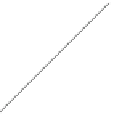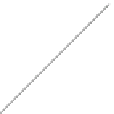Biomedical Engineering Reference
In-Depth Information
T
33
T
23
T
11
T
13
T
32
T
21
T
22
T
22
T
12
T
31
T
3
1
T
21
e
3
T
32
T
13
T
12
e
2
T
11
T
23
e
1
T
33
Fig. 3.3
Cartesian components of stress acting on the faces of a small cubic element
are called
normal stresses
, and the remaining components
T
12
,
T
23
,
T
13
,
T
21
,
T
32
,
T
31
are called
shearing stresses
. Each of these components has the dimension of force
per unit area.
Recall that stress was defined as the force per unit area that the upper portion
U
exerts on the lower portion
L
. From this definition, it follows that if the exterior
normal of the object is in the positive coordinate direction, then positive normal and
shear stresses will also be in the positive coordinate direction. If the exterior normal
of the object is in the negative coordinate direction however, positive normal and
shear stresses will point in the negative coordinate direction. The rule for the signs
of stress components is as follows:
the stress on a plane is positive if it points in a
positive direction on a positive plane
,
or in a negative direction on a negative
plane
.
Otherwise it is negative
.
It will now be shown, following an 1822 result of Cauchy, that the nine
components of stress are sufficient to characterize the entire state of stress at a
point. Specifically, it will be shown that
the state of stress at a point P is completely
determined if the stress vectors associated with three mutually perpendicular
planes are known at P and are continuous in a neighborhood of P
. The stress
vector
t
(
n
)
acting on any plane whose normal is
n
is given by
2
3
2
3
2
3
t
ðnÞ
1
t
ðnÞ
2
t
ðnÞ
3
T
11
T
12
T
13
T
21
T
22
T
23
T
31
T
32
T
33
n
1
n
2
n
3
4
5
¼
4
5
4
5
(3.15)
or
t
ðnÞ
¼
T
n
;
t
ðnÞ
i
¼
T
ij
n
j
:
(3.16)
This means that the stress tensor
T
can be considered as a linear transformation
that transforms the unit normal
n
into the stress vector
t
(
n
)
acting on the plane whose
normal is
n
.
To prove this result we consider the tetrahedral element of an object shown in
Fig.
3.4
as a free object and apply Newton's second law to the force system acting














































































Search WWH ::

Custom Search